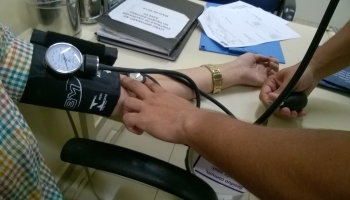Reading Time: 3 minutes
If you’ve struggled to get clean or to remain clean after being addicted to opiates, you’ve probably considered a medically assisted treatment program. But did you ever wonder how does methadone treatment work? And how do you know if it’s the right choice for you?
How Methadone Treatment Works
Find a Provider

You’ll undergo an evaluation and an assessment before receiving methadone.
To begin methadone treatment, you must first find a provider. If you’re unaware of any in your area, you have a few options. First, talk to your family doctor to see if there’s a methadone maintenance program in the area he or she would recommend. You can also call your insurance company to get a list of the federally funded clinics in the area.
If neither of these are an option, look up the number for your local drug and alcohol referral agency and they’ll be able to point you in the right direction.
Go to the Clinic
Once you’ve found a provider, you’ll have to schedule an appointment to go to the clinic. Once there, you’ll receive a drug test, an assessment, and an evaluation. During this intake process, you’ll be asked all sorts of questions, and be as honest as possible. Remember, the addiction specialists are not there to judge you and you are definitely not the first addict they’ve worked with. You’ll get your initial dose this day, which is typically between 30 and 40 mg.
Beginning Treatment
As your dose gradually increases to a maintenance level between 60 and 120 mg, you’ll participate in both individual counseling and group therapy. If needed, you may also be recommended for case management, where you’ll be assisted in getting your basic needs met, including finding a job, getting stable housing, and getting medical needs addressed.
Maintenance and Privileges
As you progress though methadone treatment, you will get to the maintenance stage where you are no longer having drug cravings or withdrawal symptoms. You shouldn’t feel high at this stage, or be distracted by the thoughts of drug use. Once this is established, you may be given take home privileges and not have to go to the clinic every day. This stage should last the longest, and it’s recommended to wait at least two years before considering weaning off methadone.
Tapering
After you’ve completely stabilized, successfully remained on methadone without a relapse, and have improved your life circumstances, you may consider tapering off methadone. Methadone is a strong opiate, and therefore highly addictive.
To properly wean off, the medication needs to be slowly tapered to avoid withdrawal symptoms and drug cravings, which can easily lead to relapse. Work with your counselor and take at least three to six months to taper off.
